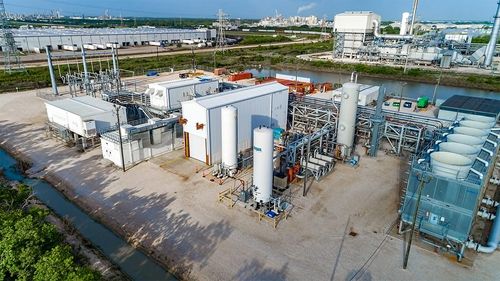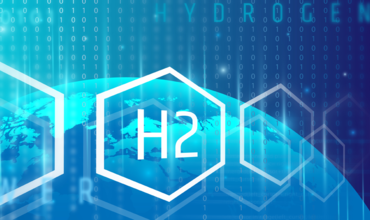The US Department of Energy came out this week with the news that it was not yet ready to release the long-awaited winners of its $8bn hydrogen hubs funding opportunity, as Secretary of Energy Jennifer Granholm noted Monday at the Hydrogen Americas Summit in Washington, DC.
The delay disappointed many in the industry, who are also waiting for crucial guidance from the IRS on rules for clean hydrogen tax credits.
Gaining access to funding from government and other agency sources is top of mind for many developers seeking to de-risk their projects and reach FID. But only hydrogen, ammonia, and other clean fuels projects exhibiting “the best in the business” are garnering support from government financing agencies and commercial lenders.
Speakers on a financing panel at the summit yesterday pointed to the successful FID of the Air Products-backed NEOM green hydrogen project in Saudi Arabia as an effective project finance model, where major sponsors working together helped to de-risk the proposal and attract support from export credit agencies and global banks.
In the US, large players like ExxonMobil (Hydrogen Liftoff Hub), NextEra (Southeast Hydrogen Network), and Chevron (ACES Delta) have applied for DOE hydrogen hubs funding, according to the results of a FOIA request, joining major utilities and other oil and gas companies like bp and Linde in the running for funds.
In addition to inadequate regulatory guidance, some developers have already started grumbling that the proposed government assistance will not be enough to meet the scale of decarbonization needs. And the nascent clean fuels project finance market still needs to sift through techno-economic challenges in order to reach its potential, according to comments made yesterday on a panel called Financing Clean Hydrogen.
Leopoldo Gomez, a vice president of global infrastructure finance at Citi, sees a big role for the project finance framework for hydrogen facilities undertaken by independent project developers as well as strategics looking to strike the appropriate risk allocation for new projects.
And Michael Mudd, a director on BofA’s global sustainable finance team, said hydrogen projects are similar in many ways to established facilities like power and LNG, but with additional complexities, like understanding the impact of intermittent power and how to appropriately scale technologies.
Credibility
This year, Pennsylvania-based Air Products along with ACWA Power and NEOM Company finalized and signed an $8.5bn financing agreement for NEOM the project, which will build 4 GW of renewables powering production of up to 600 tons per day of hydrogen. The National Development Fund and the Saudi Industrial Development Fund kicked in a total of $2.75bn for the project, with the balance covered by a consortium of 23 global lenders.
“It is very important from the financing side to make sure the parties that are at the table are the best in the business, and that’s what we’re seeing with the projects that are able to receive either commitments from the DOE Loan Programs office or from commercial lenders and export credit agencies,” Gomez said.
Highly credible engineering firms are also critical to advance projects, and the EPCs themselves might still need to get comfortable integrating new technologies that add more complexity to projects when compared to power generation or LNG projects.
“The bottom line is that having someone that’s very credible to execute a complex project that involves electrolyzers or carbon capture or new renewable power generation within the parameters of the transaction” is critical for providing risk mitigation for the benefit of investors, Gomez added.
Funding sources
Additional funding sources are intended to be made available for clean fuels projects as part of the Inflation Reduction Act, the panelists said.
Most notably, tax credit transferability and the credits in section 45Q for carbon capture and sequestration and 45V for clean hydrogen are available on a long-term basis and as a direct-pay option, which would open up cash flows for developers.
“If you can use [tax credit transfers] as a contract, you can essentially monetize the tax credits in the form of debt and equity,” Mudd said. And if a highly rated corporate entity is the counterparty on the tax transfer, he added, the corporate rating of the buyer can be used to leverage the project for developers that don’t have the tax capacity.
Still, section 45V is potentially the most complex tax credit the market has ever seen, requiring a multi-layer analysis, according to Gomez, who advised patience among developers as prospective lenders evaluate the potential revenue streams from the tax credit market.
“First and foremost we’ll be looking at cash flows driven by the offtake contract, but it will be highly likely that lenders can take a view on […] underwriting 10 years of 45V at a given amount,” Gomez added.
Crucial guidance on how to conduct a lifecycle emissions analysis is still outstanding, however, making it difficult to bring all project parties to the table, according to Shannon Angielski, a principal at law and government relations firm Van Ness Feldman.
“It’s going to hinge on how the lifecycle analyses are conducted and how you have some transparency across states and borders” regarding the potential for a green premium on clean hydrogen, she added.
Agency support
In Canada, the Varennes Carbon Recycling plant in Quebec has received CAD 770m of provincial and federal support, primarily from the Canada Infrastructure Bank and the province of Quebec, noted Amendeep Garcha of Natural Resources Canada.
Around CAD 500m of funding from the Canada Infrastructure bank is also going to support hydrogen refueling infrastructure, Garcha said, with the aim of establishing a hydrogen highway that will form the basis of the hydrogen ecosystem in Quebec.
Pierre Audinet, lead energy specialist from World Bank Group, noted how the international development agency was stepping in to provide support for projects that might otherwise not get off the ground.
“In the world where I work, we face a lot of scarcity of capital,” he noted, adding that the World Bank has backed the implementation of clean fuels policies in India with a $1.5bn loan.
Additionally, the World Bank has supported a $150m project in Chile, providing insurance and capital for a financing facility that will reduce the costs of electrolyzers. Chile, while it benefits from sun and wind resources, said Audinet, is less competitive when it comes to transportation given its geographic location.
The agency is also working to help the local government in the Northeastern Brazil port of Pecem. Shared infrastructure at the port will help reduce risks for investors who have taken a stake in the port facilities, Audinet said.







